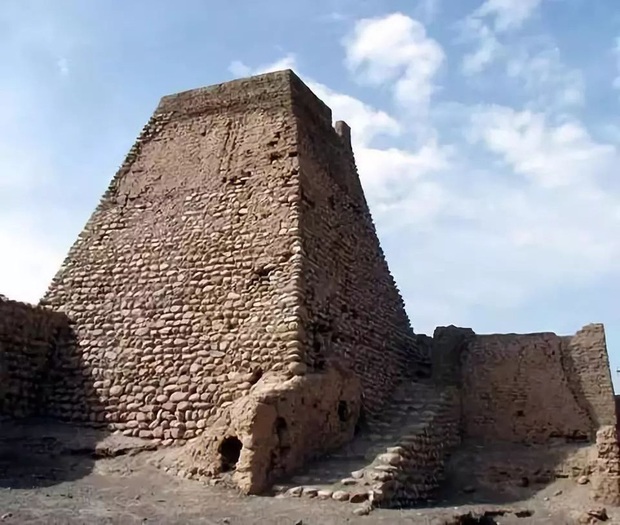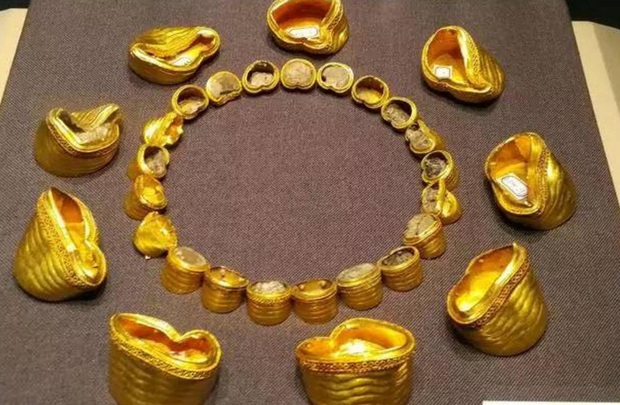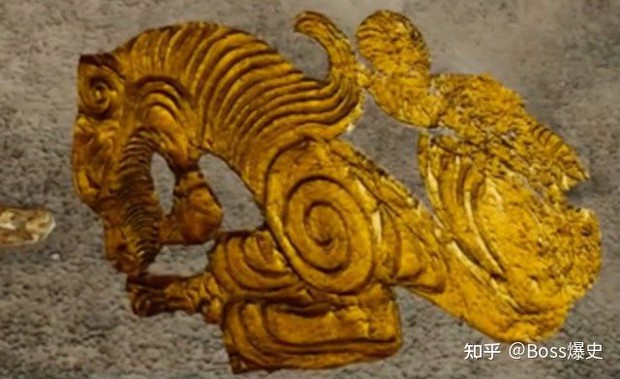The owner of the tomb was buried more than 2,000 years ago. Why did she have a wound on her skull that looked like she had been hit by a bullet?
“Golden Tomb” in Xinjiang
At the intersection of Ai Uyurgou and Alagou in Xinjiang, China there is a small town called “Yurgou”. This is one of the lowest lying areas on the Tianshan slopes and was the northern and southern key of the ancient Silk Road.
Ancient nomads mainly worked here, so many historical ruins and tombs are preserved in this sunny and windy land of sand dunes.
In 1976, because the construction of the Yuergou railway needed materials, workers collected stones in this area and discovered a total of 85 tombs from the Spring and Autumn period to the Qin and Han dynasties were excavated. . However, the cultural relics excavated from these ancient tombs are mostly rudimentary and unremarkable, just colored ceramics, wooden objects and small pieces of bronze.

“Golden tomb” found in Xinjiang (Image: Sohu)
At first, archeology experts were somewhat disappointed by this meager harvest, but an ancient tomb attracted their attention. Because not only were more than 200 gold artifacts found here, but also a mysterious female body.
According to experts, the top of this tomb is sealed with stone, in the middle is covered with a thick layer of sand, below is a layer of pebbles and finally is the tomb.
The entire tomb is about 6.56 meters long, 4.22 meters wide and 7.1 meters deep. A total of 8 gold medallions engraved with tiger images, 4 gold belts shaped like tigers, a gold medallion shaped like a lion and other gold products were excavated from the tomb.


Burial items made of gold were found in the tomb (Image: Zhihu)
What surprised experts the most was the lion-shaped metal plate with a huge size of nearly a ton. In addition, the archaeological team also discovered the first lacquer product of the Central Plains region (now China) in a tomb.
Because based on the carbon 14 assessment results, the time the tomb owner was buried was about 2345 to 2135 years ago. Therefore, the discovery of this lacquerware is of great significance. So who is the owner of this mysterious tomb? Why were there so many golden burial items in her tomb?
The identity of the female owner of the tomb
After opening the coffin, archaeologists discovered a human skeleton. According to examination, this skeleton was a woman and died around the age of 30. What surprised experts the most was that there was a hole in this mummy’s skull, as if someone had taken a bullet through her skull.
After a long period of research, experts were able to resolve the reason why this hole appeared. It turns out that this is an extremely popular “cranial opening” surgery method among ancient Chinese nomads.

A skull with a hole was discovered in the tomb (Image: Net Ease)
Once someone got sick in the head, they would drill a hole in the head to relieve the patient’s pain. However, the risks of this type of surgery are very high. If not careful, the patient will die.
According to experts, the female owner of the tomb was most likely the daughter or royal concubine of the Saka tribal chief more than 2,000 years ago.
Because more than 3,000 years ago, the Saka tribe lived and worked strongly in the Pamir Mountains, Thien Son and most of the northern part of Xinjiang. They lived mainly on water and grass, officially entered class society at the end of the 3rd century BC, and began to establish a state.
In the “Book of Han” , the Saka ethnic group is mentioned with an important role in the Xinjiang region. This nation greatly worships gold, so most of the burial items in their tombs are also gold. And the female owner of this tomb may have a status and position that is not ordinary in the tribe. Because she was only in her 30s when she died, experts speculate that she was the daughter or royal concubine of the Saka tribe’s chief.
However, there is still no solid evidence or conclusion about the identity of the mysterious female owner of this “golden tomb”.